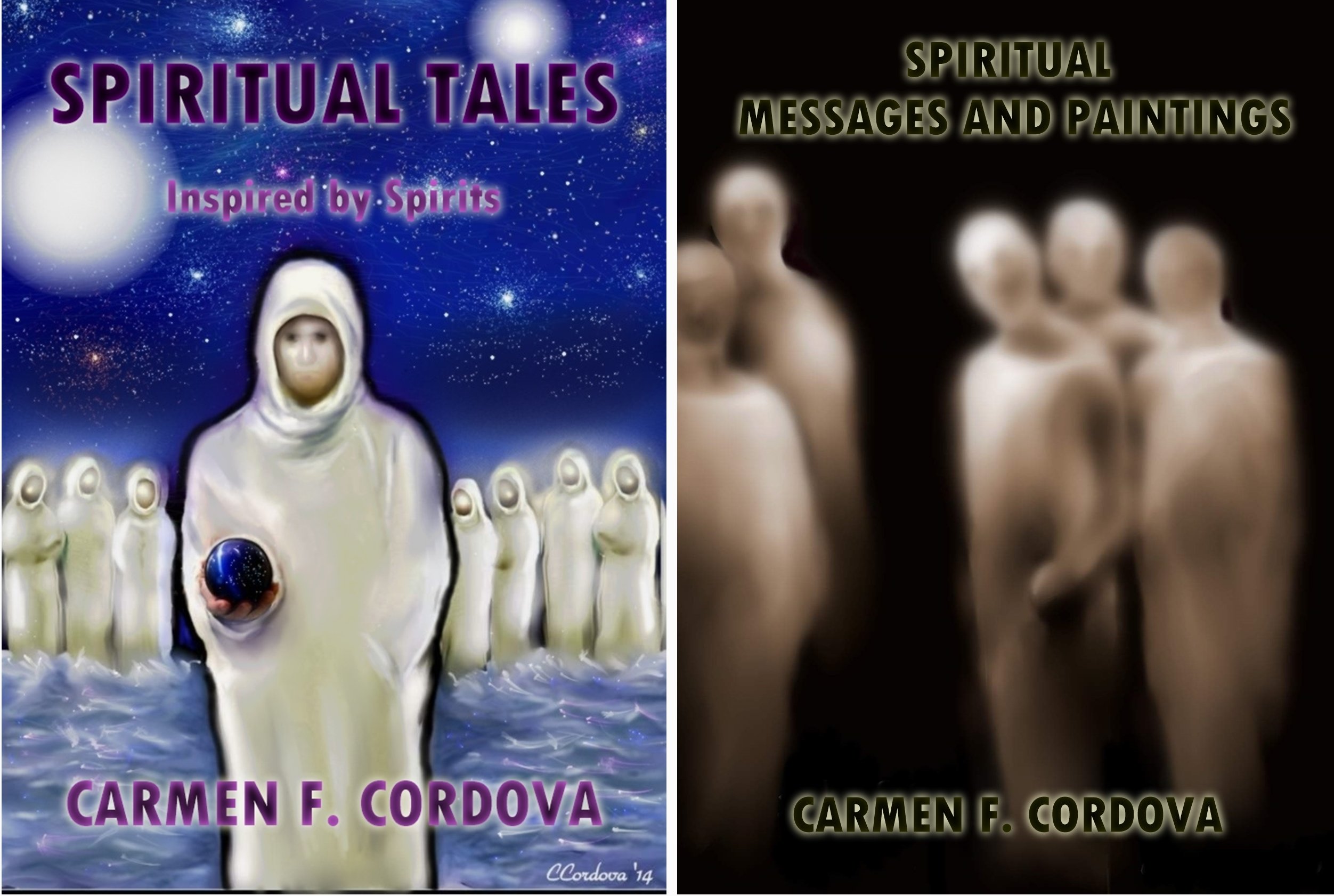The Art of Precipitated Spirit Painting
A Spirit Art Form
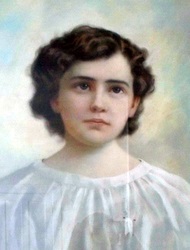 Lily Dale Assemby - precipitated spirit painting
Lily Dale Assemby - precipitated spirit paintingPrecipitated spirit paintings are artworks believed to be created by spirits without any human touch. Produced during séances by mediums channeling spirits, these paintings intrigue with their mysterious origins. In this article, we explore the history, creation process, and key figures behind precipitated spirit painting.
Lily Dale Assemby is known for its vast collection of precipitated spirit paintings.
The Process of Creating Precipitated Spirit Paintings
The creation of precipitated spirit paintings is a process shrouded in mystery and spiritual intrigue. These artworks are said to emerge on canvas without any physical intervention from the human artist, often during spiritual séances. Mediums claim that the spirits themselves, rather than just guiding human hands, create these paintings.
According to an article written by Ron Nagy, author of Precipitated Spirit Paintings, for The National Spiritualist Summit, March 2005 publication, it is, "a work of art, usually a portrait, which appears on canvas without the use of human hands during a Spiritualist seance."
When a seance was conducted for creating a spirit painting, a new and clean canvas was used. The canvas was placed on an easel. In certain cases, Ron Nagy writes, "the canvas is laid flat, facing up on the table, with all in attendance placing their palms down on the table around the canvas."
In addition, a container of paint containing all the colors of the spectrum is placed near the canvas. No brushes are available.
As the medium, one who communicates with spirits, goes into a trance, the sitter, one who requests a spirit painting, and observers remain in a meditative state. The sitter is instructed to think of or visualize their departed loved one.
A painting begins to manifest in a short while, which can take fifteen to ninety minutes.
One salient fact about these paintings is that they contain no visible brush strokes.
The process of creating these paintings directly challenges our understanding of art and the boundaries between the physical and spiritual realms.
The first reported display of this phenomenon was in 1894 by the Elizabeth and Mary Bangs. Below is a painting created by spirit through the Bangs Sisters.
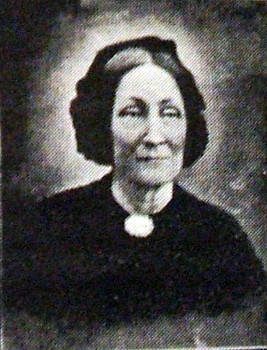 Painting on display at Lily Dale
Painting on display at Lily DaleFamous Precipitated Spirit Paintings and Artists
The late 19th century witnessed the emergence of precipitated spirit paintings, a phenomenon that left an indelible mark on the landscape of spiritualism and art. It was in the 1890s that notable mediums such as the Campbell Brothers and the Bangs Sisters began to gain national recognition in the United States for their extraordinary claims and artworks.
The Campbell Brothers- Allen Campbell and Charles Shourds- were among the pioneers of this mystical art form. They are renowned for their precipitated portraits, including a famous one of Abraham Lincoln, which they created without physically touching the canvas. Their works, such as the portrait of the spirit guide Azur displayed at the Maplewood Hotel in Lily Dale, continue to be admired for their mystical origins and artistic merit. This ability to produce art without physical intervention intrigued and mystified the public, drawing both admirers and skeptics.
Contemporaneously, the Bangs Sisters, Elizabeth and May, were also making waves with their spirit portraits. They were reputed for creating detailed precipitated portraits of deceased individuals, further fueling the fascination with spirit art. The Bangs sisters could receive spirit communications through direct writing and painting. As part of their spiritual practices, they also created automatic drawings, further contributing to the realm of spiritual art. Despite facing accusations of fraud, both the Campbell Brothers and the Bangs Sisters were staunchly defended by many within the Spiritualist community who believed in the authenticity of their works.
Another notable figure is Helena Blavatsky, a significant figure in the Spiritualist movement who also created spirit paintings in the early stages of her career. The 1871 exhibition of Georgiana Houghton in London marked a significant moment in the history of spirit art, bringing these mystical creations to a broader audience.
Also, one of the pioneering figures in this realm was David Duguid, known for his ‘direct’ spirit paintings and guided works during séances.
These artists and their works exemplify the profound connection between art and the spiritual, pushing the boundaries of what is considered possible in the world of painting.
Witnessing the Creation: Accounts and Experiences
The experience of witnessing the creation of a precipitated spirit painting is nothing short of awe-inspiring. Many guests witnessed the gradual development of these paintings, claiming that the process occurred in full visibility during séances, showcasing various spiritual phenomena.
Witnesses at séances involving the Campbell Brothers often described the gradual formation of paintings on canvas while the mediums were in a trance state. One well-documented case involved the creation of the portrait of Azur, captivating those present with its mystical emergence. The ritualistic elements of these séances, where mediums engage in spiritual practices to invite the presence of spirits, add to the profound experience.
Participants often describe feeling a shared connection with the medium and the spirit world, transforming their perception and leaving a lasting impact on their spiritual beliefs and artistic appreciation.
The information collected states that the Bangs sisters conducted these sessions in broad daylight in front of several eyewitnesses. Additionally, they remained in their seats and avoided physical contact with the painting during its formation.
These painting were spirited produced and under spirit control.
The Creation of Azur
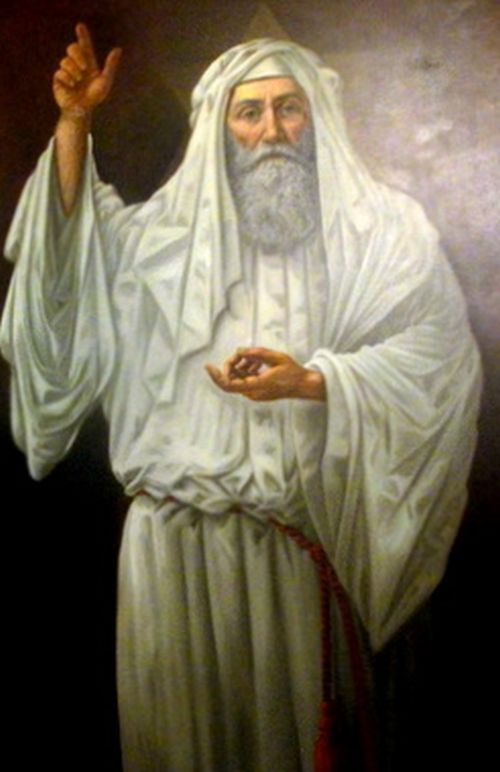 Azur in Lily Dale
Azur in Lily DaleSpiritual Themes and Symbolism in Precipitated Spirit Paintings
The Campbell Brothers, Allan B. Campbell, and Charles Shrouds were not related by blood. They lived together in Lily Dale, New York.
In 1898, the Campbell Brothers manifested one of their famous spirit paintings called Azur, a spirit guide (see painting above). The session was conducted in a room that contained a sufficient amount of light for those present to witness the spiritual phenomena. To ensure that the 40”x 60” canvas was not switched, the guests were encouraged to place their personal markings on the back of the canvas. During the process, the guests witnessed the gradual development of the painting on canvas. The painting was completed in one hour and thirty minutes.
Skeptics have tried to discredit the validity of such paintings. They are so determined to prove their point that sometimes they miss the point- that there is a great-unseen Higher Force
Virgin of Guadalupe Painting
Religious Imagery
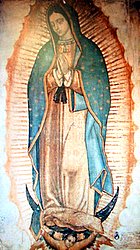 Virgin de Guadalupe
Virgin de GuadalupeThe most famous painting, created not by man but by divine spirit intervention, is the Virgin of Guadalupe. which holds significant importance in the context of modern art. Throughout the years, this painting has been studied and investigated. The result is, “image is inexplicable.” The painting incorporates elements of religious imagery, such as the halo and organic shapes, which evoke deeper spiritual themes.
Spiritual Themes and Symbolism in Precipitated Spirit Paintings
Spirit paintings are not just artistic expressions but also profound spiritual experiences. Guests often express a deep emotional connection while observing the creation of these works, describing it as a deeply spiritual and transformative experience. Many attendees report a sense of elevated energy and presence during the painting process, attributing it to the involvement of spiritual entities.
The absence of visible brush strokes in these paintings emphasizes the notion of spiritual creation over physical artistry, further deepening the mystical allure. The themes and symbolism embedded in spirit paintings often convey messages or emotions that resonate deeply with the viewers’ own life experiences, creating a unique and personal markings connection with the artwork.
This aspect of spirit art highlights its role in fostering personal reflection and spiritual growth.
Modern Interpretations and Influence on Contemporary Art
The influence of spiritualism on modern art has been profound and far-reaching. Spiritualist ideas significantly impacted artists at the turn of the 20th century, contributing to the development of modernist movements across various disciplines.
Early abstract artist Hilma af Klint was deeply influenced by Spiritualism, creating a vast body of work based on her spiritual beliefs. Similarly, artists like Wassily Kandinsky and Piet Mondrian drew inspiration from spiritual concepts, with Kandinsky publishing influential texts that linked these ideas to artistic expression.
Contemporary exhibitions now aim to reassess and recognize the significance of spiritualist art, arguing for its profound impact on the evolution of modern artistic thought. This ongoing reassessment underscores the enduring legacy of spirit paintings in contemporary art.
The Role of Mediums in Spirit Painting
Mediums play a crucial role in the creation of spirit paintings, acting as intermediaries between the physical and spiritual realms. During séances, mediums enter trance states, allowing spirits to communicate through visual imagery. These trance states enable mediums to access spiritual realms, permitting spirits to relay messages directly or through automatic writing and drawing. Different levels of trance affect the clarity and type of communication with spirit guides during the creative process.
Mediums like Helena Blavatsky have been instrumental in creating numerous precipitated spirit paintings, often involving the sitter’s focus on a departed loved one, which can influence the imagery produced.
The role of mediums, therefore, is integral to the manifestation of spirit paintings, bridging the gap between the seen and unseen worlds, including the medium’s body.
Preserving and Exhibiting Precipitated Spirit Paintings
Preserving and exhibiting precipitated spirit paintings ensures that these mystical artworks continue to inspire and intrigue future generations. The Lily Dale Museum houses a significant collection of these paintings, showcasing works created during séances by renowned mediums like the Campbell Brothers.
The Maplewood Hotel in Lily Dale also features notable spirit paintings, such as the portrait of Azur, displayed prominently in its lobby. These efforts to preserve and publicly display spirit paintings encourage a broader appreciation and understanding of this unique art form.
Summary
The journey through the world of precipitated spirit paintings reveals a fascinating blend of art and spirituality. From their mysterious origins with the Campbell Brothers and Bangs Sisters to the profound process of their creation, these paintings challenge our understanding of art’s boundaries.
As we reflect on the famous works and their modern interpretations, it becomes clear that spirit paintings have left an indelible mark on the art world. Their preservation and exhibition ensure that their mystical allure continues to captivate and inspire.
You can select to believe or not believe. The reality is that there are things that are beyond our comprehension.
There are times when we must put aside our personal beliefs and accept that some things have no tangible explanation.
“For those who believe, no proof is necessary. For those who don't believe, no proof is possible.”
― Stuart Chase
Indeed, God works in mysterious ways.
For more information on precipitated spirit paintings read Precipitated Spirit Paintings by Ron Nagy.
If you ever visit Lily Dale, don't forget to visit the Lily Dale Museum and see the extensive collection of precipitated paintings. The Lily Dale Museum is a valuable repository of spirit artwork.
And, if you go to Mexico City, it is a must to visit the Basilica of Our Lady of Guadalupe.
Click below and views more than 600 pieces of spiritual artwork

Spiritual Books
If you enjoy the articles on this website, you will also appreciate the short stories in the books below. Click here and continue the journey.
